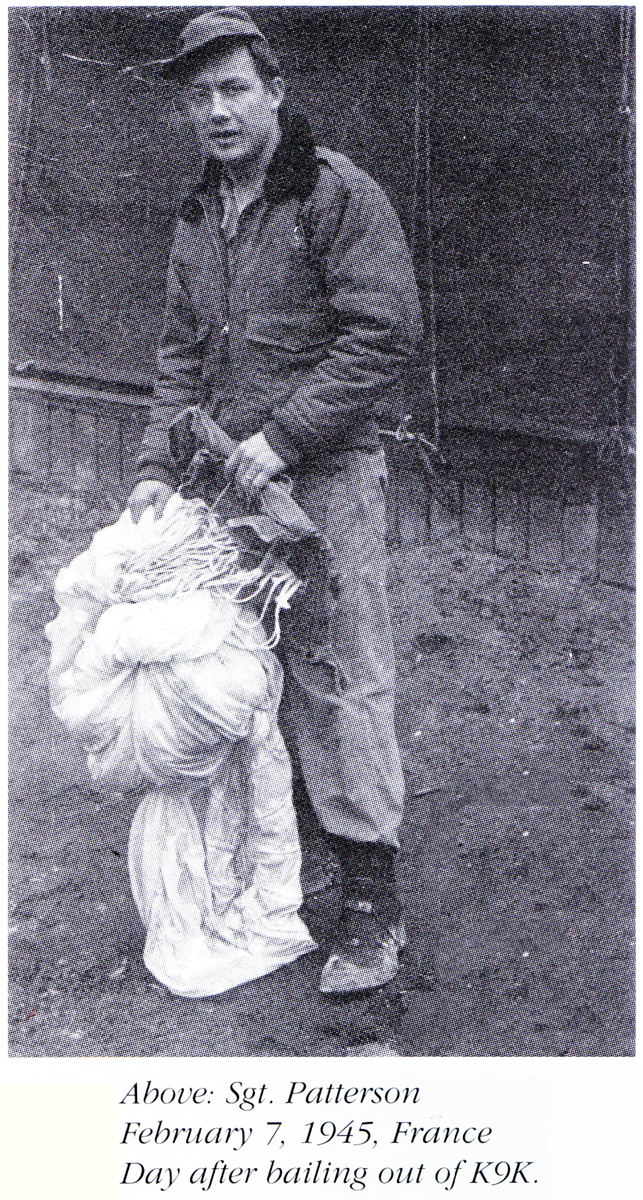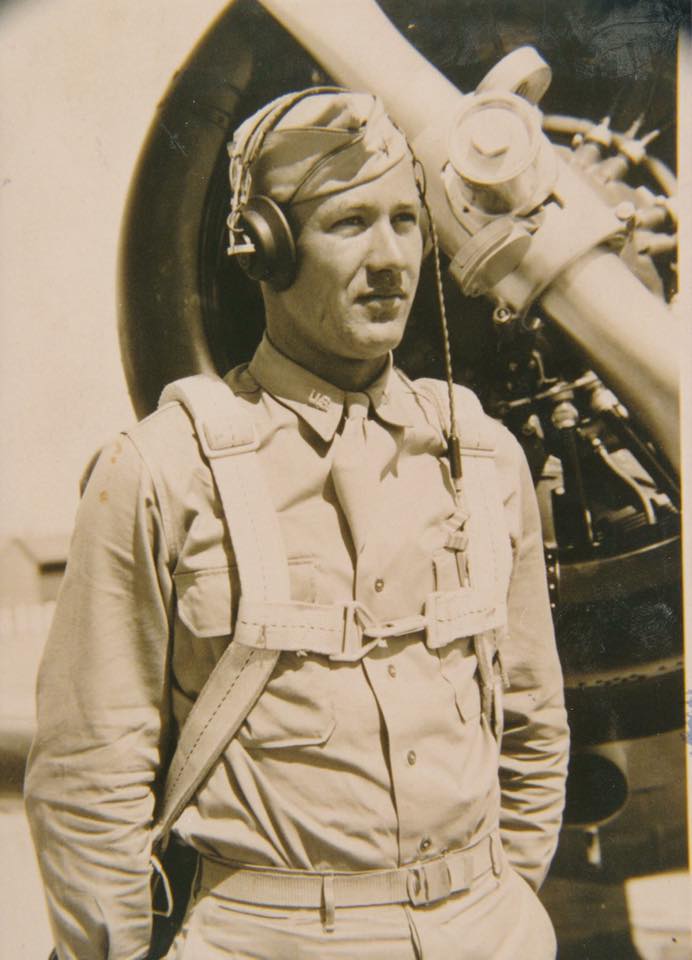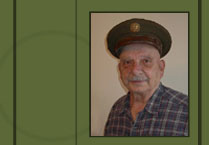Robert Conrad Mid-Air Collision 2/6/45
Robert Conrad’s time at Station A-59 was not without mishap. On February 6, 1945, his bomb group had finished a mission attacking the Rheinbach ammo dump. Conrad was the co-pilot. Returning home, their plane and others were diverted to Station A-73 Roye/Amy Airfield due to bad weather conditions. They were eventually ordered to return to home base. The weather was so bad at A-59 that the plane was again diverted to another airfield, Station A-60 Beaumont-sur Oise. According to the accident report, one of the pilots reported that visibility at the field was zero straight ahead. The field could only be seen by looking out the side window while banking to the left. Radio reception at that time was reportedly very poor and unbeknownst to either crew, both B26s were circling the field in the same pattern attempting to land. Both planes suddenly loomed out of the clouds. Both pilots attempted to avoid a collision but the wing of one plane hit the tail of the other plane, severely crippling both aircraft. Pilot Edward M Cain managed to get his plane up to about 1500 feet and all crew bailed out safely. Co-pilot Clyde Donald “Don” Chaney, 1st Lt. said that right after the mid air collision, the crew came toward the cockpit. Chaney put the wheels down, opened the hatch and they bailed out through the nose wheel-well. The other Pilot, Conrad C Oberg 1st Lt. and Co-Pilot Robert D Conrad, 2nd Lt. got up to around 3500 feet and the entire crew parachuted to safety. The incident was chalked up to bad weather conditions. Both planes were totally destroyed. About ten years ago, at a reunion of the bomb group, Chaney met the 18 year old waist gunner, William R Skinner, Jr., S/Sgt, from the other plane. He was from Ohio and went home to have a large family like Chaney’s. On page 345 of Lambert D. Austin’s book, there is a picture of Sergeant Patterson, one of the other crew members from the other plane. He’s standing there with his open parachute, on February 7, 1945 the day after the collision.
According to Sarah Conrad Van Riper , “Robert D Conrad is my Dad. Upon request he would tell the family his story of the time he bailed out of his plane during WWII. As he was about to jump he went back into the cockpit to grab his Lucky Strike cigarettes. He jumped out through the wheel well He could not see the ground so he kept his legs crossed so he would not be racked by a tree. The clouds cleared for a few seconds and he opened his legs but quickly crossed them again. This occurred several times. He landed in a hay field. As he was gathering up his white silk parachute, a farmer appeared wielding a pitch fork and yelling in french. Conrad pulled out his Wrigley’s Spearmint Gum. The farmers frown turned to a smile and he put down the pitch fork.
Conrad hitched a ride on the back of a hay wagon into Paris where he was picked up and returned to his home base at A-59 Cormeilles-en-Vexin. “
According to the report, the crew lists for the two planes were:
494th of 344th
Pilot Edward M Cain, 1st Lt. (Dad called him “Sugar” Cain)
Co pilot Clyde Donald “Don” Chaney, 1st Lt. (My Dad)
Bombardier Allen W Arneson, 1st LT
Engineer-Gunner Carroll Sowers, S/Sgt
Radio-Gunner Calvin A Van Zile, T/Sgt
Armourer-Gunner Clarence Robertson, S/Sgt
About the plane: 44-67805 Y5-A 344th 495th
Built at the Glenn L Martin factory at Baltimore, Maryland as a B-26G-15-MA. Accepted by the Army Air Force on 22/9/44. Then flown by Baltimore, Maryland (ATC) from 29/9/44, to the 3rd AF staging area at Hunter Field, Savannah, Georgia (from 29/9/44). Next went to Morrison Field, West Palm Beach, Florida (1103 BAS) from 5/10/44, from where the aircraft was flown overseas via the Southern Ferry Route, departing the USA on 7/10/44. The aircraft record card then lists, GLUE 9AF A (Europe – 9th AF) on 8/10/44, and GLUE 9AF R (Europe – 9th AF) on 21/10/44. Suffered a mid air collision 1.5 miles NNW of Beaumont, France with 43-34367 in bad weather on 6/2/45. The pilot, Lt. Edward M Cain and crew bailed out. Accident report lists this aircraft as 494th BS. The final entry on the aircraft record card lists, GLUE 9AF CON SAL BD on 7/2/45.
494th of 344th
Pilot. Conrad C Oberg, 1st Lt.
Co pilot Robert D Conrad, 2nd Lt
Engineer-Gunner Charles T D’Atrio, S/Sgt
Engineer-Gunner Walter E Thomas, S/Sgt
Radio-Gunner William R Skinner, Jr., S/Sgt
Armourer-Gunner Turner B Patterson, S/Sgt
About the plane: 43-34367 K9-K 344th 494th
Built at the Glenn L Martin factory at Baltimore, Maryland as a B-26G-5-MA. Accepted by the Army Air Force on 10/7/44. Then flown by Baltimore, Maryland (ATC) from 13/7/44, to the 3rd AF staging area at Hunter Field, Savannah, Georgia (from 13/7/44). Next went to Dow Field, Bangor, Maine (from 27/7/44), from where the aircraft was flown overseas to the UK via the Northern Ferry Route, departing the USA on 7/8/44. The aircraft record card then lists, GLUE 9AF A (Europe – 9th AF) from 7/8/44, and GLUE 9AF G (Europe – 9th AF) from 14/8/44. Entered combat with the 344th BG / 494th BS on 29/10/44. Suffered a mid air collision with 44-67805 (also from the 344th BG / 494th BS) in bad weather on 6/2/45. The pilot, Lt. Conrad C Oberg and crew bailed out 1.5 miles NNW of Beaumont, France. The final entry on the aircraft record card lists, GLUE 9AF CON SAL BD on 7/2/45.
…
.
.
Response by Conrad’s daughter to this research: Wow, you do really good research! It looks like this Feb 6 Mission was my Dad’s 5th Mission and he was listed at the co-pilot. His 6th mission on Feb 10 he states in his log “First Mission as First Pilot” so I assume that’s when he became the main pilot. The story you found explains why he did not record bailing out in his Mission Log book because he was not on a mission but just trying to get back to base. It’s quite a visual to think of going 150 mph piloting a heavy airplane with your head stuck out the window to see better in the dense fog and cold.I’m not sure if my Dad received an award that was mentioned in Clyde Chaney’s report ” Awarded to flyers who had to parachute out to save their lives”
Harold Aiken was on another of the divert planes mentioned in this incident. When asked to comment he wrote, “I was on a mission Feb 6 and was diverted to A73 where I remained overnight. On Feb 7, I returned to A 59. A 1 hour 10 minute flight. There was no weather problems at A 59 when I landed. I do not remember hearing of the mid air problems that the other squadron had.




